
Mr. Lido A. Iacocca is a polarizing figure. For some, he took all the glory, imposed his will at his own peril, and took credit for the work of others. Alternately, he was a super salesman, made his career from nothing, created some new market segments no one else had ever thought of, and saved a car company at the brink of being toast. Few are neutral about the man. But I fall a bit more into the latter camp, and the subject of today’s daily dose of Lincoln is why: The magnificent Continental Mark III.
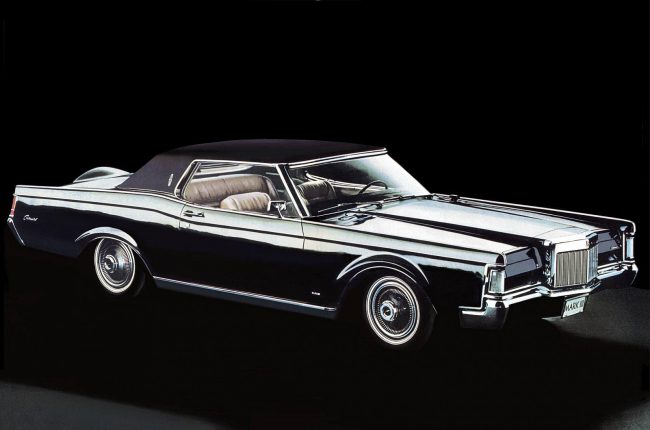
That’s right folks, “Klockau” is in the byline and the subject is Ford Motor Company’s finest. You just know there’s going to be a positive push for plush Lincolns! And so it is. Well, what can I say. My Grandpa Bob and Grandma Ruby were Ford people, with several Lincolns and Thunderbirds through the years.
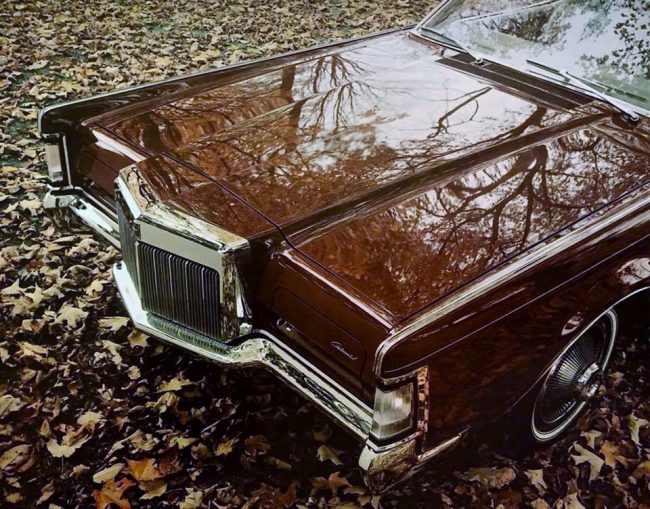
And in 1968, my grandfather traded his green over green 1966 Lincoln Continental sedan for a triple dark green Mark III. So classy! So comfy! He loved that car. One interesting thing my father recently told me. That Mark was the first one Bob Neal Lincoln-Mercury got in. My grandfather saw it sitting there and bought it on the spot.
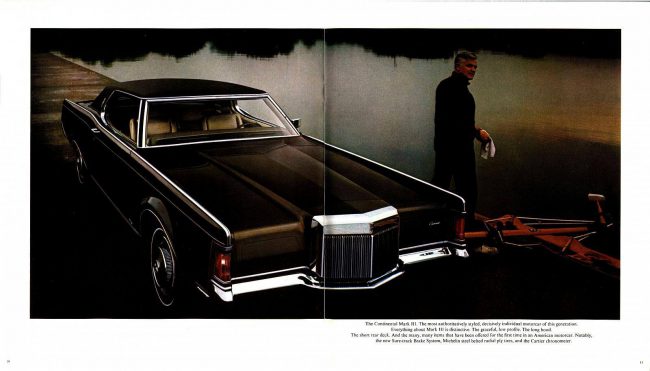
Indeed, he loved it so much that he traded it for a triple dark green 1972 Mark IV, and that one was traded for a triple navy blue 1977 Mark V. Lee Iacocca was certainly on to something, and the value of the renewed Mark III (there was a previous Mark III in 1958, but Ford decided to rewrite history) definitely exceeded the sum of its Thunderbird-derived parts. The inaugural 1969 model sold 30,858 units at $6585 initially, later bumped to $6741. The Mark III was introduced in April of 1968 but all cars were officially 1969 models, much like all first-year Mustangs were 1965s, “1964 1/2” designations notwithstanding.
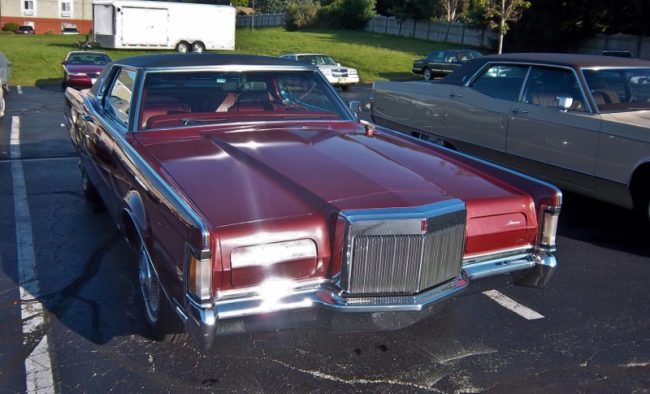
Despite the admittedly long model year, Mark III sales were quite substantial, considering 1969 Continental sedan and coupe sales came to 29,351 and 9,032, respectively. Lincoln was clearly on to something. The 460 CID V8 produced 365 horsepower through its four-barrel Autolite carburetor and had a curb weight of 4,866 pounds. 1970 models received redesigned door panels and upholstery sew style, new wheel covers and other small details, plus a price increase to $7281. With a standard production interval for this year, production went down to 21,432.
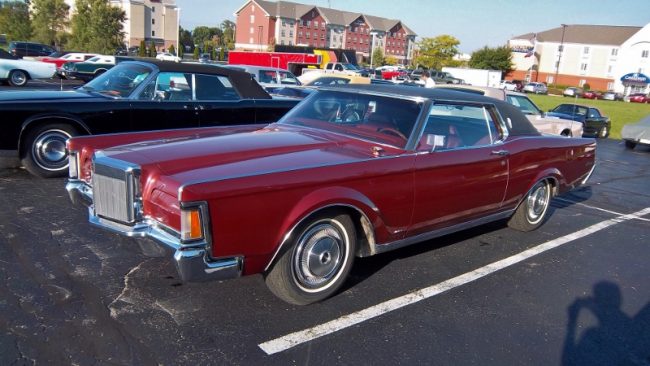
Ninety six percent of 1970 Continental Mark IIIs had air conditioning and tinted glass, and eighty-eight percent had a tilt steering wheel. I suspect the 4% of non-A/C Marks were sold in Minnesota and Anchorage, ha ha! A myriad of color choices–including optional Moondust colors, such as the Red Moondust seen on our lovely example here, were available, plus a cornucopia of interior color choices. In fact, more than anything else, I have always associated luxury cars with a vast amount of both interior and exterior color choices.

See, back then, most people bought their Lincolns, Cadillacs, and Imperials with cash, not a lease. They could afford it! And when you’re spending over seven grand-a substantial sum in the Year Of Our Lord 1970-one was not going to buy a car off the lot. Heck no. You’d want to order exactly the car you desired: color, trim, options, sunroof, the whole nine yards. And most did. It was a different time.
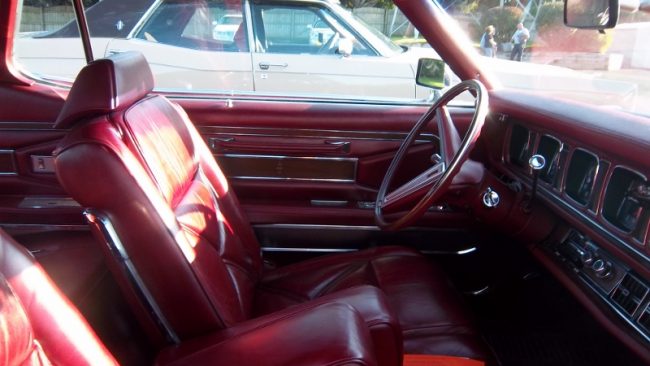
Personally, the colors on this 1970 were just about perfect to me. I loved the Red Moondust paint, and the dark red leather interior too! The easiest way to tell a 1970 from a 1971 is that most ’71s received high-back seats, though the sew style remained the same as the previous year. I prefer the separate headrests; the high-back seats always make me think Mustang. And even that is not conclusive. When the high back seats appeared on early ’71s, many people didn’t like them, so Lincoln made the low-back seats with adjustable headrests a no-cost option shortly thereafter.
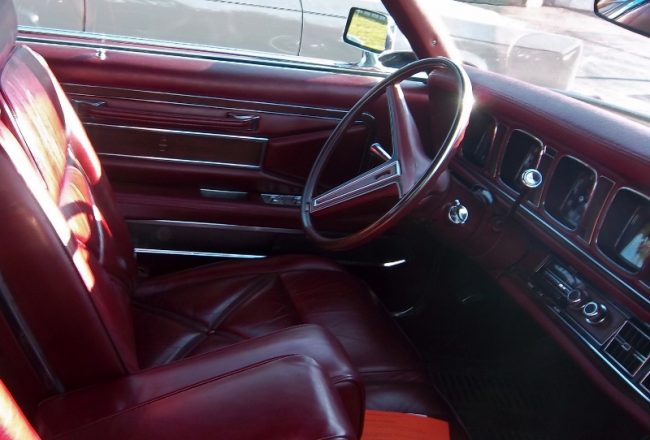
1970 and 1971 Continental Mark IIIs also received genuine walnut trim on the instrument panel. About twenty years ago, a friend of my father’s was performing some cosmetic restoration on a 1971 Mark III, and I got to sit behind the wheel. I was smitten with the interior: those instrument binnacles framed by real wood, and the Cartier clock with the second hand seamlessly sweeping across its face. This is the life! Imagine the pleasure of driving one on a regular basis!
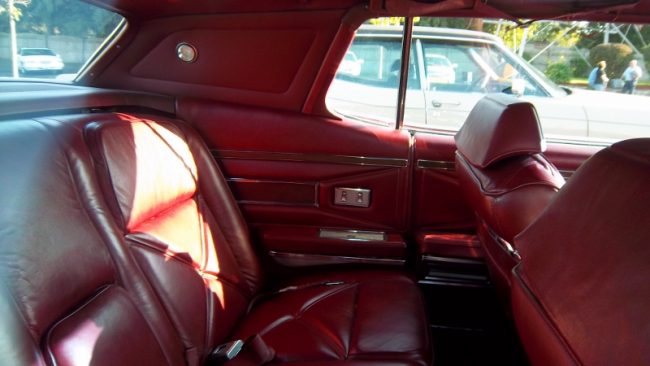
The Continental Mark III not only stole the hearts of FoMoCo faithful, they also attracted admirers from “the other luxury car make.” And eventually, the Mark would trounce Cadillac’s Eldorado in sales–though Cadillac would still outsell Lincoln as a whole until the early Navigator years.
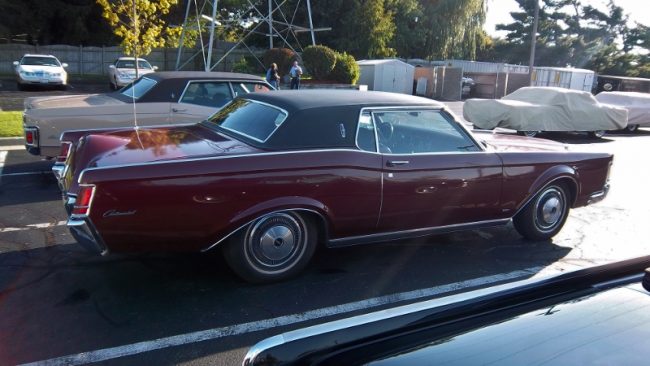
The last year for the Mark III was 1971, when 27,091 sold at $8421 a pop. Clearly Lincoln–and by association, Lee Iacocca, had a hit. Who could blame him for using past successes to create new ones, when he helmed Chrysler in the early ’80s. And the LeBarons sure sold fine–I remember many of them when I was a kid. Times were changing though, and by about 1990, the “Mark III formula” really didn’t have the sparkle and attraction it once held. The retro-Brougham 1990-93 Chrysler Imperial, while a car I personally like, just couldn’t stand up to the new-for-1992 Cadillac Seville, a tasteful modern take on American luxury. But I will give Mr. Iacocca a pass on that, for he gave us some truly wonderful Lincolns. It all started with the timeless Continental Mark III.
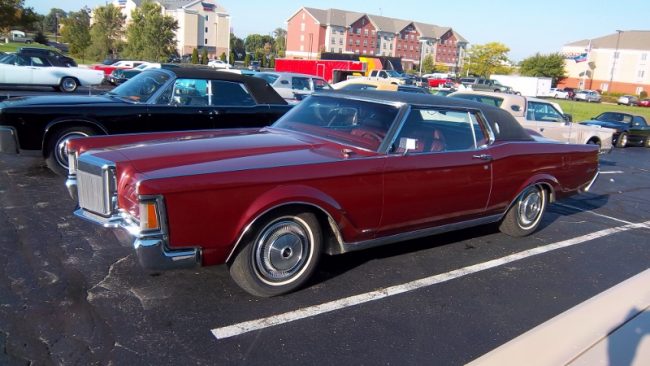







11 Comments
You rightly mentioned the changing times being the death of this type car. Iacocca tried one more time with this formula with the 1981 Imperial. If this had been a hit like the Mark III, imagine the profits for Chrysler right when they needed them. It also may have sustained the platform allowing 360 V8 Mirada muscle cars and Montabaun luxury Cordobas keeping the Chrysler RWD flame alive when the Detroit muscle trend resurfaced in the mid 80s.
The Mark IV had better lines. I think the early ones, with the tight bumpers, were some of the best looking American cars ever.
I owned a ’69 in triple black. It was awesome.
Great article , I have been a mark 3 admirer & have owned several over the years . I own 4 currently. They actually weighed around 5,000 lbs depending on options .1971 High back seat cars were built from July of 70 to around December of 70. For a few months in 1969 mark 3,s built as early 70 models had intermittent electric wipers . These cars had on going changes during the model year build . Because they were all similar next model changeover usually happened in July . So the next model year cars started production late July .
The Mark III weighed about 4800 lbs, not 6000+. Great piece otherwise!
You need to take out the coke from the rockers.
“Owners manual says 4675. And when it was booked into Marseilles it was 4-7-9-5. That’s still 120 pounds overweight!”
You are correct, I don’t know where that weight figure came from! Maybe a Mark III with a carload of football players on their way to a supper club? 🙂 Fixed.
The turbine wheel covers finished these cars off nicely, which is why I’ve always been partial to the ’69s.
Tom,
Wow, two ’70 Lincolns in a row! I have had a triple dark blue ’70 Mark for the past 11 years and it is truly a wonderful car. There are a few issues…the instruments are really hard to read, there was NO right side exterior mirror option for ’70-’71, creating a blind spot that would hide the Titanic. Driving the car today is almost contemporary, acceleration wise, just leave a little more room when stopping (and changing lanes). The whole idea of the car becomes evident when you get in, it elevates every trip to an event!
The comment about air conditioning, or lack thereof, brings back memories.
My old man had a “company car” in the late 1960s. For the younger set who has no memories of that era…back then, with heavy taxes at the upper end of the tax brackets, but with non-monetary compensation untaxed…it was commonplace for companies to provide executives and sales and some field staff, with “company cars.” Run it two years, and turn it back – the company would wholesale their spent company cars, the same way auto-leasing programs do, today.
So those cars were selected on the basis of resale value. The intended user often might have a choice of brand or color; but certain layouts and equipment must be had.
Humble Oil and Refining, the predecessor of Exxon, decided that air conditioning was the coming thing – and after 1968, all company cars would have it. So my father got his 1968 Galaxie with A/C. A first for him.
He did NOT trust it. He NEVER USED it. Even on the hottest days, he’d just roll the windows down.
While my mother got air conditioning on her cars, after 1973 (the Torino just had it; and it was a marked-down deal; later cars had it by routine and she came to expect it) the first car my father bought with A/C for his own use, with his own money, was his last car – a Voyager minivan.
Times change. I look at the list of standard equipment on that Mark III – pretty much what a Chevrolet Spark has standard, now. Oh, but the Spark costs twice as much, nyark-nyark…